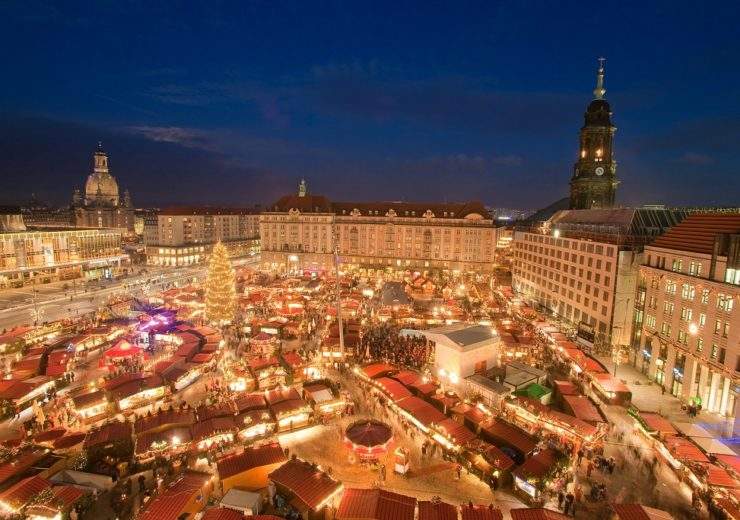Compelo speaks with IT firm Cognizant's chief digital officer and global consulting leader, retail, consumer goods, travel and hospitality, about how the best Christmas markets in the world are embracing digital transformation

The Dresden Christmas market (Credit: Wikipedia)
The best Christmas markets in the world have traditionally been known for their festive atmosphere, indulgent foods and handmade crafts – but perhaps technology will underpin their future.
Like almost everything else in the world, they are under pressure to keep up with the times and use new innovations to provide a faster, cheaper and easier experience for customers.
Here we speak with Scott Clarke, chief digital officer and global consulting leader of retail, consumer goods, travel and hospitality at IT firm Cognizant, about how Christmas markets are adopting new technology to stay ahead of the curve.
Even the best Christmas markets in the world need technology heading into 2019
Christmas markets can be found all around the world, visited by hundreds of thousands each year.
It is perhaps surprising that these events, known for their keeping of well-loved traditions and established hundreds of years ago, continue to pull in such large crowds in our ultra-connected age.
As such, many brands look to these global events as a role model, seeking to attract similar levels of consumer engagement, footfall and spend.
Despite their centuries-old origins – the Dresden Christmas market in Germany dates back to 1434, for example – it appears that traditional markets are beginning to adopt new and innovative technologies that work both behind the scenes, and front of house, to create an increasingly magical experience for consumers.
Not only have we seen a growing adoption of what is seen today as ‘the basics’, such as credit card and mobile payment methods, but last year, we also saw the launch of the Manchester Christmas market’s first ever augmented reality app, allowing visitors to throw virtual snowballs at elves that dodged out of the way and hid behind market stalls.

Able to create a distorted view of reality for the market’s visitors, it may be argued that the app, although moving away from tradition and further into the 21st century, enriched the originality of the market, making up for the lack of snow with something a little more virtual.
Adopting such technology enhanced the experience for the thousands of visitors.
So, what can brands learn from these traditional events? And where is the digital age beginning to catch up where tradition once prevailed?
To stand out against the competition, build brand loyalty and engage with the customer, digitising the customer experience is essential.
Brands need to enhance the customer experience if they want to seriously capitalise on the popular ‘pop-up’ or festival opportunity.
It is about getting people back for repeat visits, week-on-week or year-on-year, tempting them into the flagship store and, most importantly, driving profits.
All of this, while ensuring a cost-effective yet convenient approach to ‘taking a chance’ on setting up a stall at a short-term location.
How digital transformation can help meet different targets
Many of the famous Christmas markets are unique in having an advantage over other brands because of their heritage and prestige.
And several are now embracing modern technologies – keeping aspects of their heritage but also making sure the customer experience lives up to consumer expectations today.
Other brands, particularly in the events and food industries, need to consider how to apply existing and emerging technologies to drive consumer engagement, footfall and spend in the same way that the Christmas markets have done.
Likewise, brands today need to analyse consumer purchasing habits and interactions on social platforms through likes and hashtags, using this level of customer insight to tailor their products and services even more in order to increase customer loyalty and differentiate the experience, all the while supporting their profit and growth.

Even for the very highly regarded Christmas markets, delivering a superior customer service is critical amid increasingly heightened consumer expectations to keep the tradition and Christmas magic alive.
It is very easy for potential customers to abandon sales at the first sign of a long queue or a difficult purchase process and, if a firm’s approach is not first-rate, it is not hard for consumers to search for a competitor whose is.
As we see year-on-year, Christmas markets attract customers from all over the world to partake in their traditions and experiences.
Other (more recent) brands cannot rely on the prestige and heritage that these markets enjoy, nor should they.
Brands have an opportunity to use digital technology to improve the customer experience, drive loyalty to ensure consumers come back for repeat visits and make sure that brand engagement continues, even after the market stalls have been packed away.
It seems that even a highly regarded and well attended market, like the one in Manchester, is already realising that it needs a digital helping hand to keep customers coming back for more.


